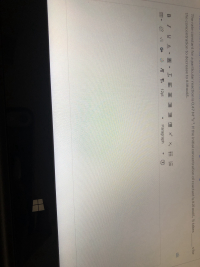
Physical Chemistry
2nd Edition
ISBN: 9781133958437
Author: Ball, David W. (david Warren), BAER, Tomas
Publisher: Wadsworth Cengage Learning,
expand_more
expand_more
format_list_bulleted
Question

Transcribed Image Text:The rate constant for a particular
the concentration to decrease to
Expert Solution
This question has been solved!
Explore an expertly crafted, step-by-step solution for a thorough understanding of key concepts.
This is a popular solution
Trending nowThis is a popular solution!
Step by stepSolved in 3 steps with 10 images

Knowledge Booster
Learn more about
Need a deep-dive on the concept behind this application? Look no further. Learn more about this topic, chemistry and related others by exploring similar questions and additional content below.Similar questions
- What is the value of the equilibrium constant of a reaction if the forward rate constant was 2.8102M1s1 and the reverse rate constant was 3.6104M1s1?arrow_forwardFor the gas-phase reaction 2H2+O22H2O rxnG is 457.18kJ. What does a graph of G versus lnQ lnQ varying from 50 to +50 look like at 25C? Change the temperature and find out if the graph looks substantially different at different temperatures.arrow_forwardWhy are there no changes specified for Ni in Exercise 13.61, part (f)? What property of Ni does change?arrow_forward
- The following series of diagrams represent the reaction XY followed over a period of time. The X molecules are red and the Y molecules are green. At the end of the time period depicted, has the reaction system reached equilibrium? Justify your answer with a one-sentence explanation.arrow_forwardWhen molecules collide, a certain minimum energy called the _________ is needed for the reaction to occur.arrow_forwardOld-fashioned smelling salts consist of ammonium carbonate, (NH4)2CO3. The reaction for the decomposition of ammonium carbonate (NH4)2CO3(s)2NH3(g)+CO(g)+H2O(g) is endothermic. Would the smell of ammonia increase or decrease as the temperature is increased?arrow_forward
- Consider the following hypothetical reaction: A+BC Calculate the average rate of the reaction on the basis of the following information: a. Pure A and B are mixed, and after 12.0minutes the measured concentration of C is 0.396mol/L. b. Pure A,B, and C are mixed together at equal concentrations of 0.300M. After 8.00minutes, the concentration of C is found to be 0.455M.arrow_forwardThe equilibrium constant expression for a given reaction depends on how the equilibrium equation is written. Explain the meaning of that statement. You may, if you wish, use the equilibrium equation N2(g)+3H2(g)2NH3(g) to illustrate your explanation.arrow_forwardA reaction is run at 10C and takes 3.7hours to go to completion. How long would it take to complete the reaction at 30C?arrow_forward
- Consider the following hypothetical reaction: A+BC Calculate the average rate of the reaction on the basis of the following information: a. Pure A,B, and C are mixed together at concentrations of A+B=0.400M, C=0.150M. After 6.00minutes, the concentration of C is 0.418M. b. Pure A, and B are mixed together at same concentrations of 0.361M. After 7.00minutes, the concentration of A is found to be 0.048M.arrow_forwardFor the endothermic reaction AB(g)A(g)+B(g), the following represents a reaction container at two different temperatures. Which one (I or II) is at the lower temperature?arrow_forward. Equilibrium may be defined as the ________ of two processes, one of which is the opposite of the other.arrow_forward
arrow_back_ios
SEE MORE QUESTIONS
arrow_forward_ios
Recommended textbooks for you
 Physical ChemistryChemistryISBN:9781133958437Author:Ball, David W. (david Warren), BAER, TomasPublisher:Wadsworth Cengage Learning,
Physical ChemistryChemistryISBN:9781133958437Author:Ball, David W. (david Warren), BAER, TomasPublisher:Wadsworth Cengage Learning, World of Chemistry, 3rd editionChemistryISBN:9781133109655Author:Steven S. Zumdahl, Susan L. Zumdahl, Donald J. DeCostePublisher:Brooks / Cole / Cengage Learning
World of Chemistry, 3rd editionChemistryISBN:9781133109655Author:Steven S. Zumdahl, Susan L. Zumdahl, Donald J. DeCostePublisher:Brooks / Cole / Cengage Learning Chemistry: The Molecular ScienceChemistryISBN:9781285199047Author:John W. Moore, Conrad L. StanitskiPublisher:Cengage Learning
Chemistry: The Molecular ScienceChemistryISBN:9781285199047Author:John W. Moore, Conrad L. StanitskiPublisher:Cengage Learning Chemistry for Engineering StudentsChemistryISBN:9781337398909Author:Lawrence S. Brown, Tom HolmePublisher:Cengage Learning
Chemistry for Engineering StudentsChemistryISBN:9781337398909Author:Lawrence S. Brown, Tom HolmePublisher:Cengage Learning Introductory Chemistry: An Active Learning Approa...ChemistryISBN:9781305079250Author:Mark S. Cracolice, Ed PetersPublisher:Cengage Learning
Introductory Chemistry: An Active Learning Approa...ChemistryISBN:9781305079250Author:Mark S. Cracolice, Ed PetersPublisher:Cengage Learning Introductory Chemistry: A FoundationChemistryISBN:9781337399425Author:Steven S. Zumdahl, Donald J. DeCostePublisher:Cengage Learning
Introductory Chemistry: A FoundationChemistryISBN:9781337399425Author:Steven S. Zumdahl, Donald J. DeCostePublisher:Cengage Learning

Physical Chemistry
Chemistry
ISBN:9781133958437
Author:Ball, David W. (david Warren), BAER, Tomas
Publisher:Wadsworth Cengage Learning,

World of Chemistry, 3rd edition
Chemistry
ISBN:9781133109655
Author:Steven S. Zumdahl, Susan L. Zumdahl, Donald J. DeCoste
Publisher:Brooks / Cole / Cengage Learning

Chemistry: The Molecular Science
Chemistry
ISBN:9781285199047
Author:John W. Moore, Conrad L. Stanitski
Publisher:Cengage Learning

Chemistry for Engineering Students
Chemistry
ISBN:9781337398909
Author:Lawrence S. Brown, Tom Holme
Publisher:Cengage Learning

Introductory Chemistry: An Active Learning Approa...
Chemistry
ISBN:9781305079250
Author:Mark S. Cracolice, Ed Peters
Publisher:Cengage Learning

Introductory Chemistry: A Foundation
Chemistry
ISBN:9781337399425
Author:Steven S. Zumdahl, Donald J. DeCoste
Publisher:Cengage Learning